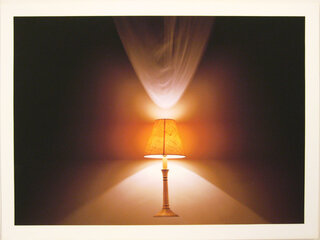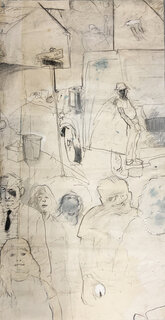
The locale depicted in Pasture Lot and the circumstances of the print’s creation are unknown. Unlike other printmaking techniques, lithography requires the services and expertise of a printer
well-versed in the technical complexities of the process. During the first half of the twentieth century, skilled lithographic printers were in relatively short supply, and artists often had to travel great distances to work with a printer or send their lithographic stones to a printer by rail. One possibility is that Hatton created Pasture Lot with Francis Chapin, an instructor of lithography at the School of the Art Institute of Chicago, where she studied during the summer of 1932. Other lithographic printers to whom Hatton would have had access in the 1930s and 1940s include Lawrence Barrett at the Broadmoor Academy in Colorado Springs and William Dickerson at the School of the Wichita Art Association in the artist’s native Kansas.




